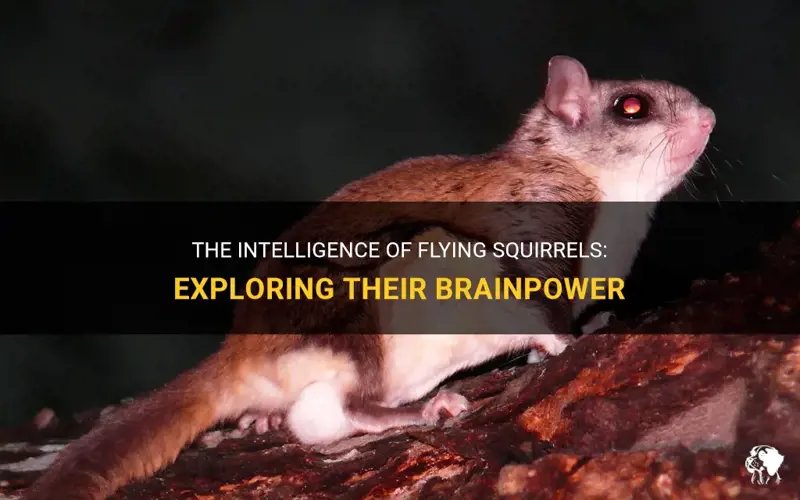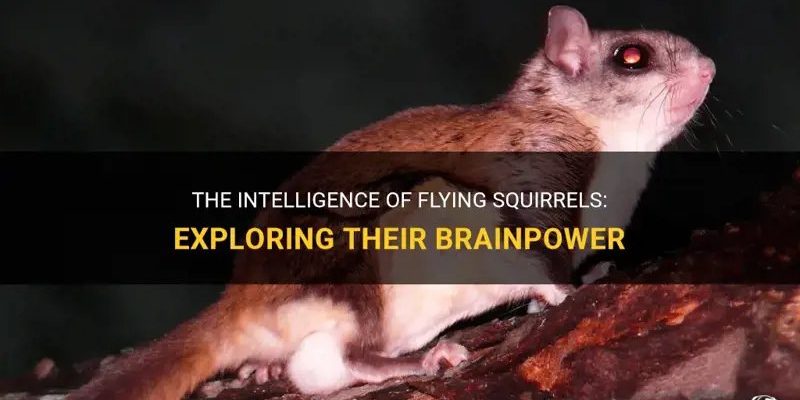
Flying squirrels are not just pretty faces; they pack a lot of cognitive punch hidden beneath their fluffy exteriors. Today, we’re diving into what makes these creatures tick when it comes to their brains and behavior. So grab your favorite drink, and let’s take a leisurely stroll through the fascinating world of flying squirrels!
What Are Flying Squirrels?
Before we dive into their intelligence, let’s clarify what these fascinating creatures are. Flying squirrels are nocturnal rodents found primarily in North America, Asia, and parts of Europe. You might be surprised to learn that they don’t actually “fly” in the traditional sense. Instead, they glide! They have a special membrane called the patagium that stretches from their wrists to their ankles, allowing them to soar gracefully from tree to tree.
There are several species of flying squirrels, including the Southern Flying Squirrel and the Northern Flying Squirrel. They have large, expressive eyes that help them see well in low-light conditions, making nighttime adventures their forte. Imagine them as little aerial ninjas, darting through the dark with confidence.
Understanding Their Cognitive Abilities
So, what’s going on inside a flying squirrel’s head? These little beings possess remarkable cognitive abilities compared to your average garden-variety squirrel. One of the key areas where their intelligence shines is spatial awareness. Flying squirrels can navigate complex environments, remembering the location of food sources and their nests—a bit like your friend who always knows where the best pizza places are in town!
Research suggests that flying squirrels can also learn from experience. If they encounter a predator, such as an owl or a hawk, they tend to adapt their behavior over time, choosing different trees or gliding paths to avoid danger. This ability to learn and adapt shows they have a keen understanding of their world, making them far from simple-minded animals.
Social Behavior and Communication
Flying squirrels might be solitary, but they know how to socialize when it matters. These critters communicate using a variety of sounds, including chirps and barks. You might be wondering how this relates to their intelligence. Well, their vocalizations help them maintain social structures and signal when danger is nearby.
When they’re in groups, they often engage in playful behaviors. Observations show that young flying squirrels play-fight and engage in acrobatics, which helps them develop their skills for navigating their environment. It’s almost like a flying squirrel’s version of a training camp!
Problem-Solving Skills
Flying squirrels also showcase impressive problem-solving skills. Studies have found that they can tackle simple puzzles, like figuring out how to access food hidden in a container. It’s a bit like watching a clever child work through a tricky maze. These little critters don’t just go for the easy snack; they can devise ways to reach their goals.
One fascinating experiment involved placing food in different containers that required various methods to open. Flying squirrels demonstrated the ability to remember which strategy worked best, showing that they can learn, retain, and apply knowledge to new situations. This adaptability is a hallmark of higher cognitive functioning.
Memory and Navigation
Memory plays a significant role in how flying squirrels thrive in their habitats. They rely on spatial memory to locate food caches and navigate their territory. Imagine having a mental map of every snack location around your neighborhood; that’s how flying squirrels operate!
Research indicates that they can recall locations more effectively than some other animals. They remember which trees are best for gliding and where to find their favorite acorns. This memory aids their survival, enabling them to return to these spots even months after hiding food—a true testament to their mental prowess.
Adapting to Environments
Flying squirrels demonstrate remarkable adaptability, which speaks volumes about their cognitive abilities. They thrive in various environments, from dense forests to urban areas. This flexibility shows they can assess their surroundings and make decisions based on available resources and potential threats.
For instance, if food is scarce in their natural forest habitat, they may venture into urban areas where they can find leftovers or even bird feeders. This ability to adapt is not just about survival but also showcases their intelligence and ingenuity.
So, just how smart is a flying squirrel? The evidence suggests they’re much more than cute, fluffy animals flitting through the trees. From their impressive spatial awareness and adaptable problem-solving skills to their unique social behaviors, flying squirrels exhibit a range of cognitive abilities that deserve our admiration.
Next time you catch a glimpse of one gracefully gliding through the night sky, remember there’s a sharp mind at work, making decisions and navigating the world with ease. These little creatures remind us that intelligence comes in all shapes and sizes, often hidden behind the most unexpected faces. The flying squirrel might just be one of nature’s cleverest tricks!

